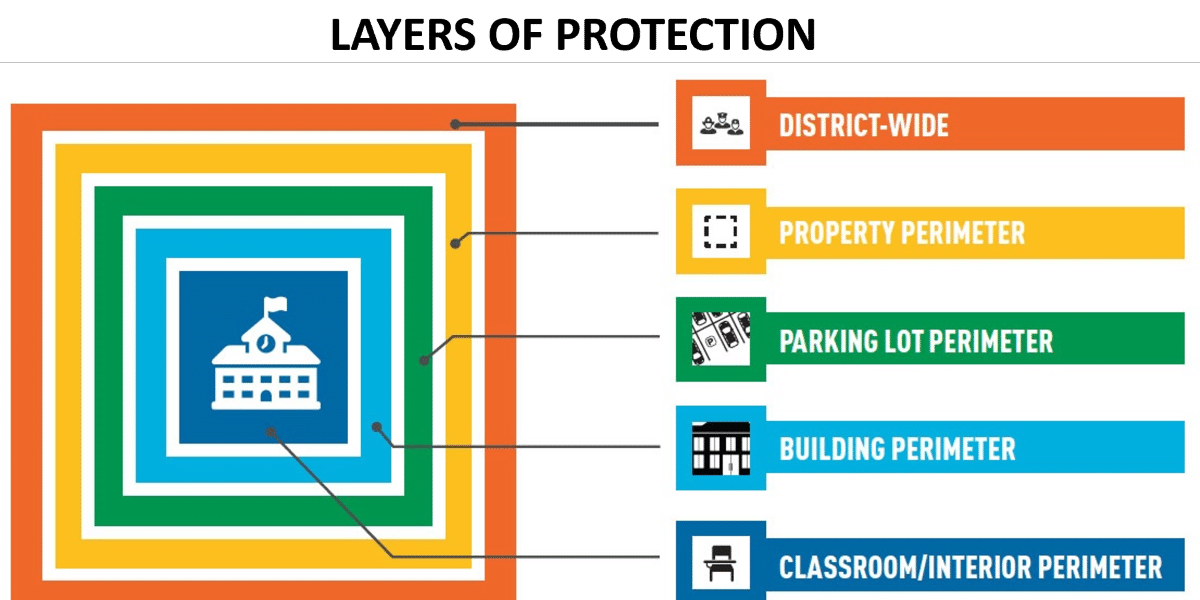By Rob Schorr and Paul Hevesy
There are few topics in the news these days that are more important or emotionally charged than K-12 and specifically religiously oriented school security.
This topic has generated a plethora of complex solutions. However, researched more thoroughly, many of the resultant system designs are certainly not for the untrained and may result in schools resembling a prison more than an educational institution. Many of these solutions are ultimately halted due to perpetual installer dependence and exorbitant funding requirements.
Where to Begin
That said, it is worthwhile to learn and seek out the best plans from professionals, as well as those with the unfortunate life experiences surviving the all too well-known school attacks across the country.
The best place to start might be the nationally recognized and Security Industry Association (SIA) supported Partner Alliance for Safer Schools (PASS) guidelines. They offer the most comprehensive, end-to-end security analysis and design tool for protecting grade-school campuses (see the overview image, below) and they offer it free to schools!
While the guidance, plans, specifications and general consultation are free, abiding products are not and following such best practices is a long-term commitment, usually covering many budget cycles. While encouraged, it is not always practical and compromise is usually the resulting outcome.
Common Sense First Steps
The staff and budget required to digest and implement the balance of the PASS contents may be overwhelming and have unfortunately dissuaded smaller campuses such as private schools from the attempt at all. This typically results in calls to local security vendors, who may offer the more well publicized video surveillance and perimeter access control products as their panacea, while, unfortunately, missing the most effective mitigation solution – swapping out their brass key classroom locks with electronic lockdown locks.
Beyond the obvious perimeter door locking policy and installation of a single entry-point card access and visitor entrance, PASS and several State Education Authorities have now published specifications for classroom security locks.
Notably, these are the most effective and the lowest cost security dollars a school can spend and they can also be the simplest to implement and maintain especially since every classroom door needs a door lock anyway.
Classroom vs. Global Lockdown During a Crisis Event
“There has never been an event in which an active shooter breached a locked classroom door,” a safety commission convened after the Newtown massacre pointed out in 2015, with recent analysis showing that this statement remains true today.
Practically, but surprisingly not widely discussed, the classrooms most immediately in need of locking down are those in most immediate danger – in the closest proximity to the initiating and unfolding event. Thus, they must be given the tools to provide for their individual lockdown and safety. If so provided, then as the event progresses throughout a facility, each classroom can be self-secured.
What It Has Been
It is important to back up for a moment and realize that everything schools have been taught to this point is antithetical to this best practice. The term “global lockdown” is traditionally discussed as the response to an active shooter event, but what that actually means is that an administrator must first hear of the event in order for the school-wide annunciation to begin. Unfortunately, this reveals many impediments to a safe result for the staff and students under threat, including that the administrator is usually not the person closest to the event and once they hear of the event, they must locate the computer with access to the security software, must open the software and then must locate and press the Global Lockdown button. How quickly or even likely is this to happen and will first responders only be notified from a possibly unverifiable caller? The next possibility is that one or more administrators can wear a clicker, or a button can be wired into each classroom, so that an event can be received by an administrator and/or first responder more quickly. However, these costly options also do not result in the door being locked down, which must be performed by a separate action.
Now we must address the secondary actions and the problems inherent in a “Global” lockdown-centric response, resulting from the security system software responding to a “lockdown” event initiated from a classroom or elsewhere on the school grounds. The signal from a classroom or worn button will rely on some amount of IT and network gateways and switches, each of which must have 100% up-time and sufficient battery back-up to support such an event through a power loss or weather event. Unfortunately, switches regularly are reconfigured or moved and back-up power is typically in the 15 to 30 minute range, if at all. So, that is not the perfect life-safety dependency.
Even if the global lockdown is finally initiated, an important predicament must now be addressed of who will be orphaned/stranded in the hallways when all the doors are automatically locked down.
Best Practices
So let us return to the initial scenario we discussed, wherein those nearest the event and in harms way will first hear about it and will have but one thing to do – lockdown their own door. By selecting the best electronic lock available for each classroom door, this lockdown initiation of the first and closest classrooms should allow a notification to electronically reach the security software, transmitting out to the necessary administrators and even first responders, the classroom and initiator’s name and number, all without the reliance on IT infrastructure.
Further, within the classroom, the lock should have the means to be locked down in multiple ways, as selected by the school security team, including by a button on the lock, a more tamper-proof lever and button combination action and from across the room with a mobile phone-based button.
There is one more important distinction a school should understand when selecting a lockdown solution: The locks must not simply bar free entry, but they must also automatically revoke the rights of any previously valid card, keychain for or mobile key, which could otherwise be taken off of a teacher or administrator in the hallway by the intruder and used to gain entry to supposedly secured doors.
In conjunction with a key-use reporting mechanism in the lock, which will keep brass keys off of keychains altogether, this is the only fool-proof way to put safety and security in the hands of those who need it quickest, while also, though secondarily, providing administrative and first responder support.
Rob Schorr is the solutions architect and Paul Hevesy is the vice president of business development for Proxess, developers of an effective, robust and cost-effective classroom and school lockdown solution, www.proxess.com.






